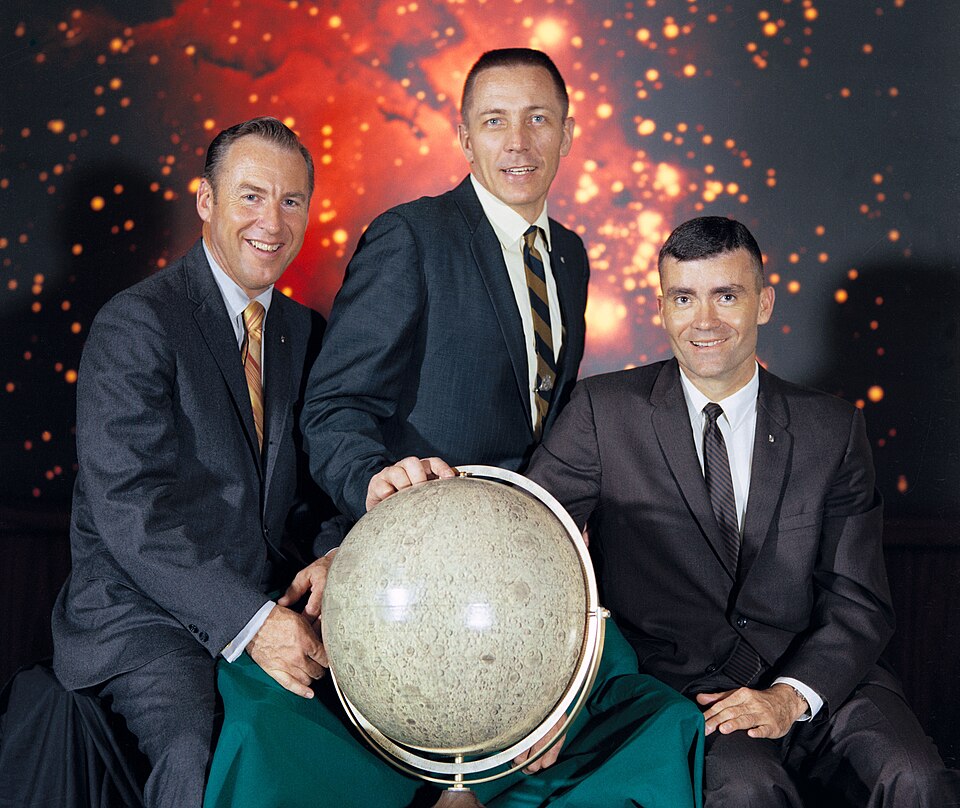The documentary Apollo 13 on Netflix showcases disaster alongside duct tape and space-based commentary about an intergalactic disaster.
Some missions go to the Moon. Others change the way we see Earth forever.
Netflix’s new documentary Apollo 13: Survival details how three astronauts turned their lunar mission into a historic rescue operation that saved their lives.
“Houston, we’ve had a problem.”
The most famous line in human space exploration history emerged from actual astronauts who faced a critical emergency while floating 200,000 miles above Earth.
The human crew experienced catastrophic oxygen failure during space travel at 200,000 miles distance with no emergency transportation option.
The following analysis explores both the historical mission of Apollo 13 and the Netflix documentary, and Glarnok and Moozart provide unfiltered commentary about the event.
What Was Apollo 13 Supposed to Be?
NASA starts the Apollo 13 space mission from Earth on April 11, 1970 as its third mission for Moon landing. The crew:
- Jim Lovell (Commander)
- Jack Swigert (Command Module Pilot)
- Fred Haise (Lunar Module Pilot)
They weren’t newbies. Three previous space missions were already behind Commander Jim Lovell when he entered the Apollo 13 spacecraft. The space mission included a straightforward mission to reach the Moon and execute a landing and sample collection followed by a successful return to Earth. The space environment decided to take a different path than what was intended.
During the second mission day an oxygen tank exploded, which rendered the spacecraft unusable thus eliminating any possibility of a lunar landing. A four-day emergency space mission began after the explosion to keep the crew alive.
Just two days in, an oxygen tank exploded, damaging the spacecraft and killing the mission's chances of reaching the Moon. A desperate 4-day space effort occurred to keep all crew members alive.
“Houston, We’ve Had a Problem”
The well-known phrase became an indicator of the approaching wild improvisational events. The command module was crippled. The astronauts needed to occupy the lunar module Aquarius despite its original purpose being a single-occupant spacecraft with limited survival time.
It was freezing. Power was scarce. The crew had to control the consumption of water supplies. The CO₂ scrubbers were failing. The mission did not match the Moon mission training. Apollo 13 successfully returned to Earth after NASA's coordinated efforts between ground crew and astronauts resulted in a safe landing on April 17, 1970.
The documentary Netflix’s Apollo 13: Survival provides viewers with factual content about this event by using original space mission audio recordings with restored NASA footage and family videos.

The documentary uses authentic space audio recordings along with NASA footage and family videos to present historical facts without dramatic embellishment like Tom Hanks' film. Director Peter Middleton guides audiences through time by using visual elements to connect them with both mission control and the space capsule.
The documentary allows listeners to detect emotional tension in the voices and experience the fast-paced decision-making while witnessing the narrow escape from space death.
It’s not just informative. It’s gripping.
Glarnok’s Take: A Message from the (Not-So) Silent Observer
“Ah yes, 1970. I remember it well. My spacecraft orbited low Earth when AM radio signals interrupted me until an oxygen tank exploded with a loud "poof." I almost spilled my gravity-free latte.
The human species displays deep flaws yet maintains a combination of reckless inventiveness which makes it endearing. The combination of duct tape and calculators with caffeine enabled you to achieve something truly remarkable. Engineers on Xarnok-9 would have taken three weeks to develop lifeboat plans after an explosion occurred. You lot had it sorted in hours. Respect.”

Moozart's Cosmic Perspective
Living with two fellow beings in a small module proves to be challenging without any available snacks. I know. It’s called being abducted by Glarnok.
These humans displayed unmatched peacefulness during a critical situation. Our reputation for staying calm stands as one of our most notable traits according to me. The astronauts floated in space with little heating while solving problems and it was breathtaking to watch.
More Than a Space Story
Apollo 13 demonstrates that failure does not represent the absolute conclusion of all situations. Failure sometimes marks the starting point of your most impressive success.
During its planned lunar excursion the mission transformed into an exceptional demonstration of engineering creativity and human survival abilities. Through its genuine storytelling and heart-pumping tension the documentary Apollo 13: Survival reveals this true story.
Meanwhile, Back on Earth…
The Apollo 13 Survival documentary will rekindle your interest in space technology alongside your nostalgia for mission control operations. We have a 21st-century solution you might find interesting.

The Alien Abduction Lamp serves as an official unauthorized memoir written by Glarnok. You can enhance your desk with an otherworldly glow while watching Apollo 13 and questioning the capabilities of humans who reached the Moon.
Too Long Didn't Read?
Watch Apollo 13: Survival on Netflix.
Marvel at how humans didn’t vaporize themselves.
Take notes on crisis management.
Listen to aliens and cows. They know things.

